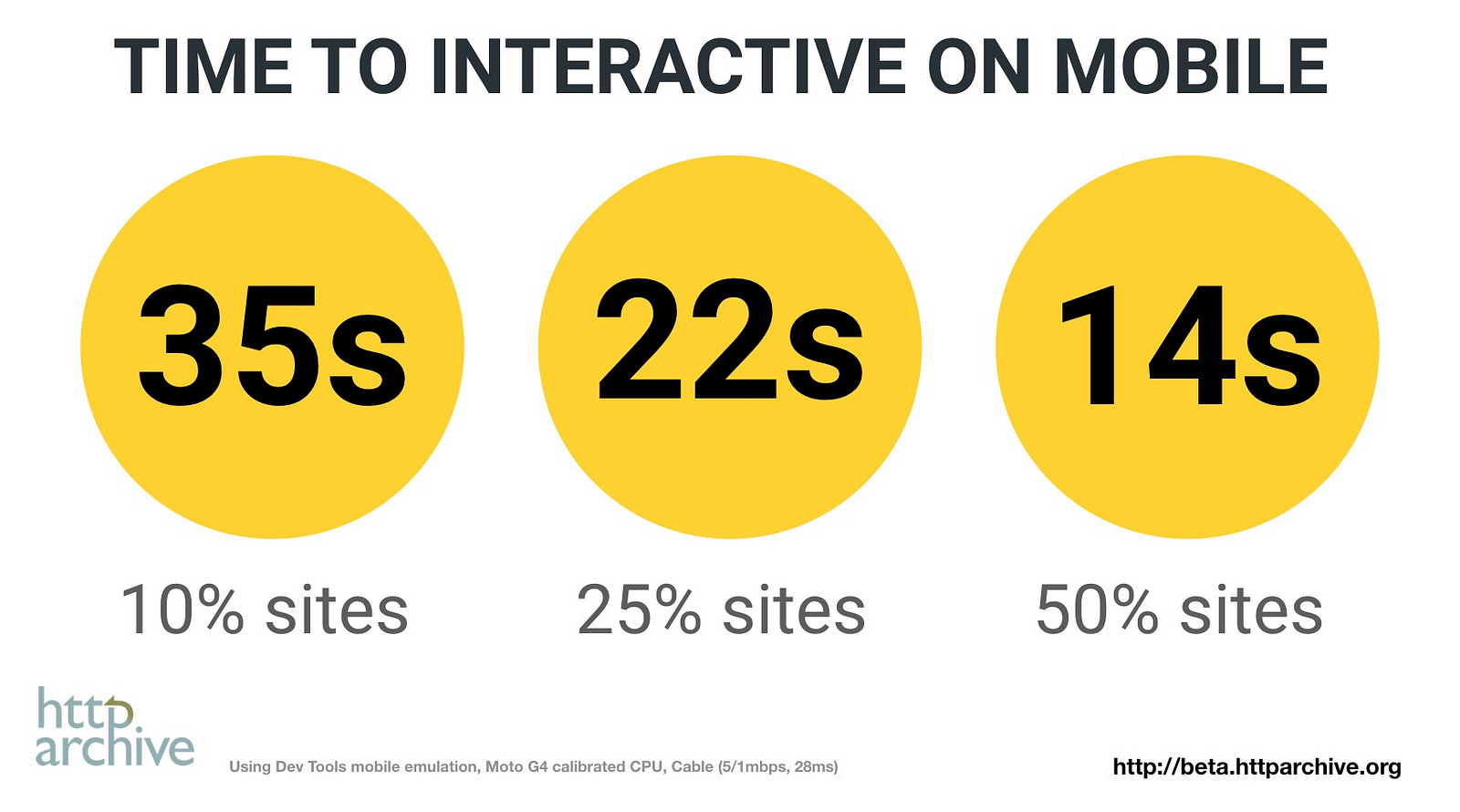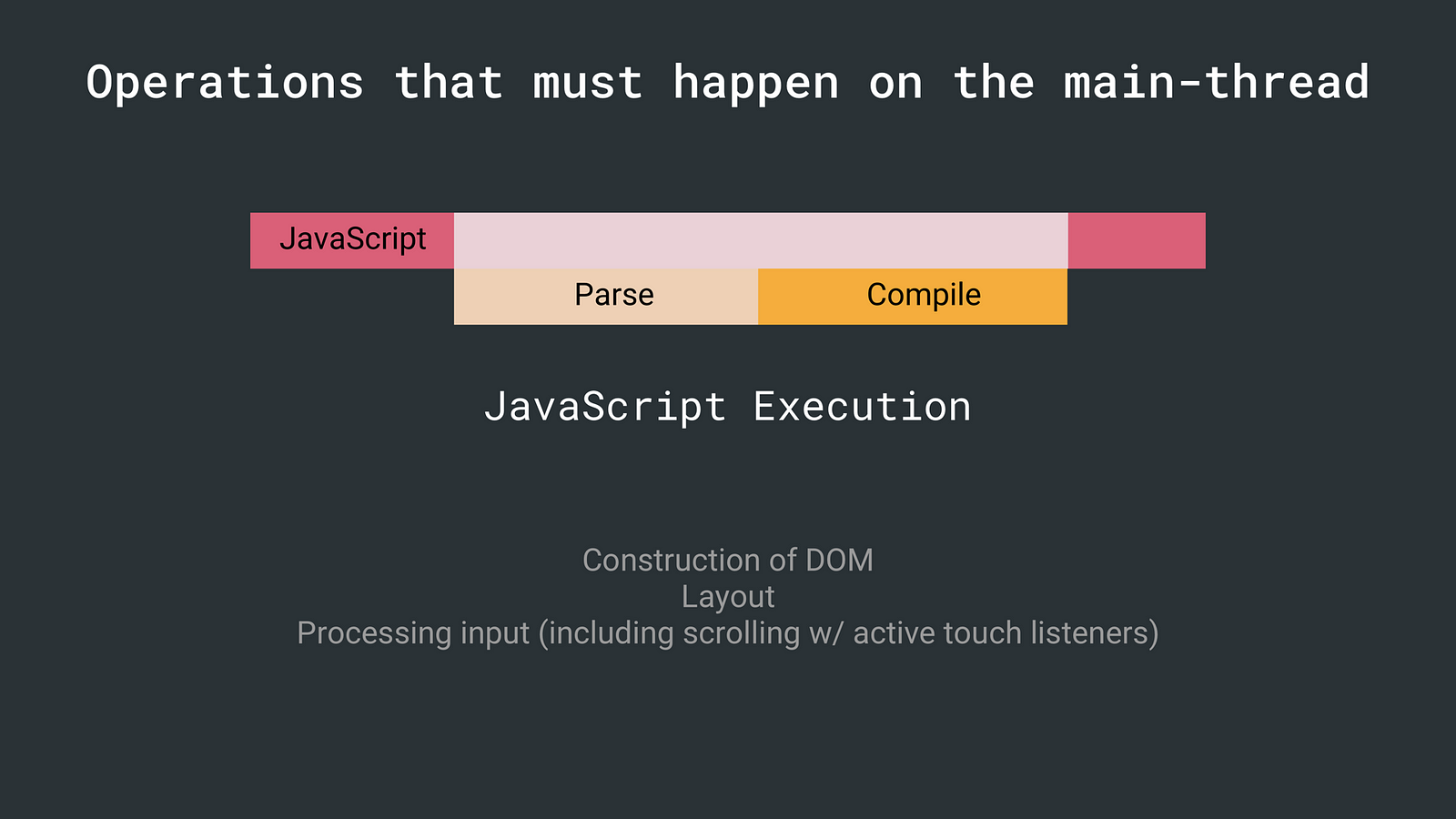The Cost Of JavaScript
This highlights the importance of testing on average hardware (like the Moto G4) instead of just the phone that might be in your pocket. Context matters however: optimize for the device & network conditions your users have.


Analytics can provide insight into the mobile device classes your real users are accessing your site with. This can provide opportunities to understand the real CPU/GPU constraints they’re operating with.
Are we really sending down too much JavaScript? Err, possibly :)
Using HTTP Archive (top ~500K sites) to analyze the state of JavaScript on mobile, we can see that 50% of sites take over 14 seconds to get interactive. These sites spend up to 4 seconds just parsing & compiling JS.


Factor in the time it takes to fetch and process JS and other resources and it’s perhaps not surprising that users can be left waiting a while before feeling pages are ready to use. We can definitely do better here.
Removing non-critical JavaScript from your pages can reduce transmission times, CPU-intensive parsing & compiling and potential memory overhead. This also helps get your pages interactive quicker.
Execution time
It’s not just parse and compile that can have a cost. JavaScript execution (running code once parsed/compiled) is one of the operations that has to happen on the main thread. Long execution times can also push out how soon a user can interact with your site.


If script executes for more than 50ms, time-to-interactive is delayed by the entire amount of time it takes to download, compile, and execute the JS — Alex Russell
To address this, JavaScript benefits from being in small chunks to avoid locking up the main thread. Explore if you can reduce how much work is being done during execution.
Patterns for reducing JavaScript delivery cost
When you’re trying to keep parse/compile & network transmit times for JavaScript slow, there are patterns that can help like route-based chunking or PRPL.
PRPL is a pattern that optimizes for interactivity through aggressive code-splitting and caching:
